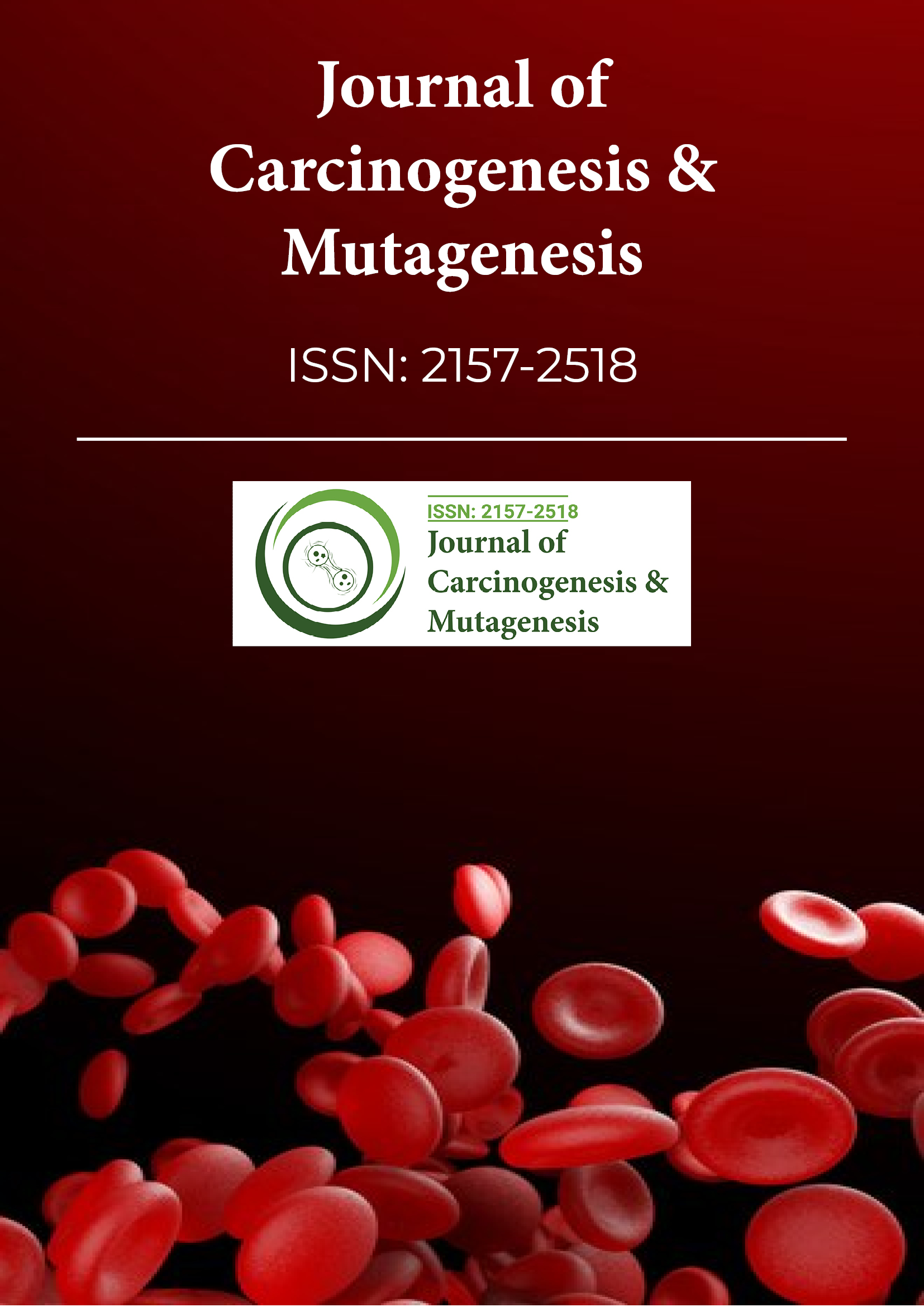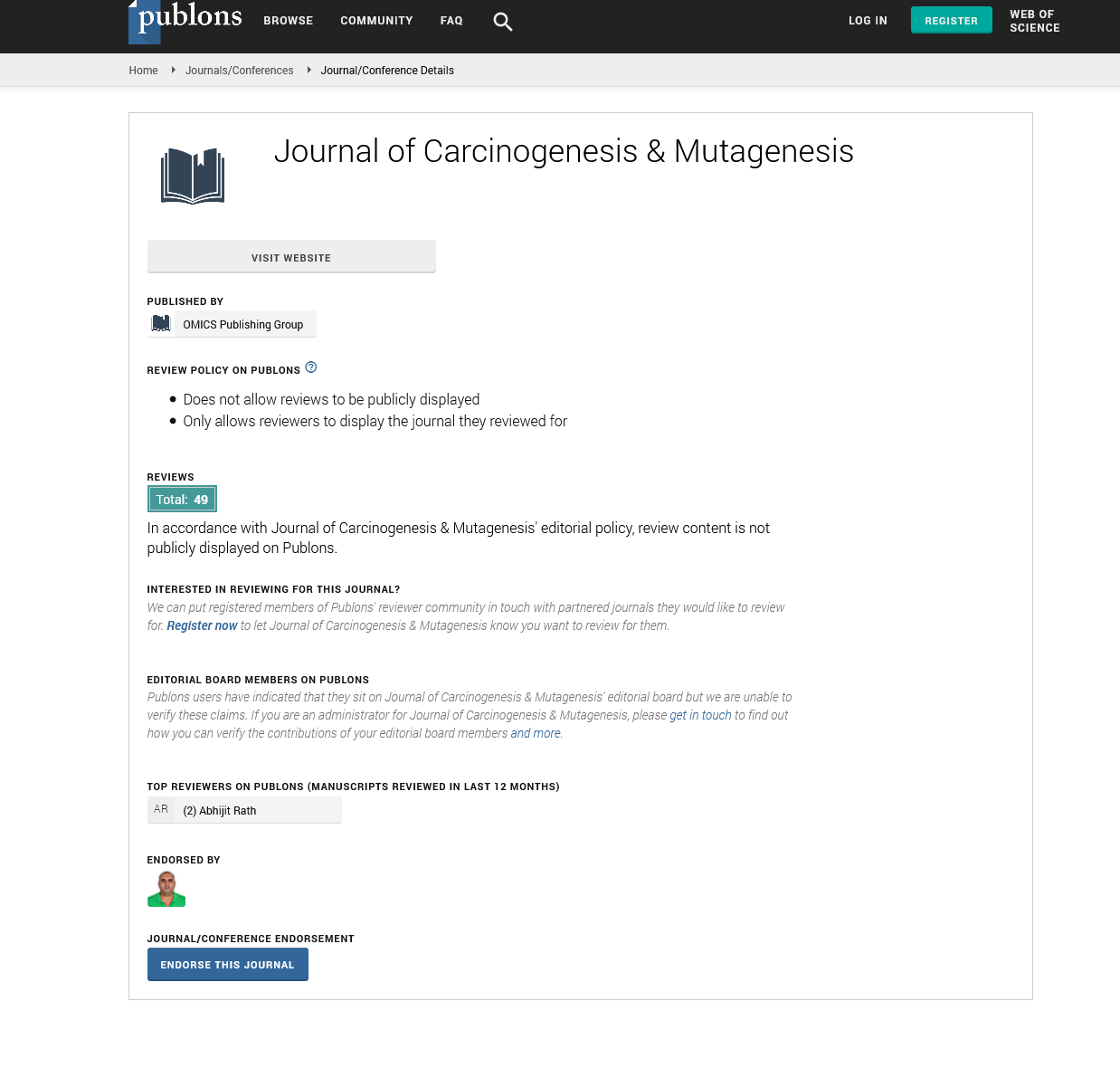Indexed In
- Open J Gate
- Genamics JournalSeek
- JournalTOCs
- Ulrich's Periodicals Directory
- RefSeek
- Hamdard University
- EBSCO A-Z
- OCLC- WorldCat
- Publons
- Geneva Foundation for Medical Education and Research
- Euro Pub
- Google Scholar
Useful Links
Share This Page
Journal Flyer

Open Access Journals
- Agri and Aquaculture
- Biochemistry
- Bioinformatics & Systems Biology
- Business & Management
- Chemistry
- Clinical Sciences
- Engineering
- Food & Nutrition
- General Science
- Genetics & Molecular Biology
- Immunology & Microbiology
- Medical Sciences
- Neuroscience & Psychology
- Nursing & Health Care
- Pharmaceutical Sciences
Opinion - (2025) Volume 0, Issue 0
The Clinical and Pathological Features of Lymphomatous Polyposis in Lymphoid Malignancies
Micah Tratt*Received: 01-Mar-2025, Manuscript No. JCM-25-28942; Editor assigned: 03-Mar-2025, Pre QC No. JCM-25-28942 (PQ); Reviewed: 17-Mar-2025, QC No. JCM-25-28942; Revised: 24-Mar-2025, Manuscript No. JCM-25-28942 (R); Published: 31-Mar-2025, DOI: 10.35248/2157-2518.25.16.004
Description
Lymphomatous polyposis is a rare manifestation of gastrointestinal involvement by malignant lymphoma, most commonly associated with mantle cell lymphoma, a subtype of B-cell non-Hodgkin lymphoma. It is characterized by the presence of numerous polyp-like lesions scattered throughout the gastrointestinal tract, especially the colon, small intestine, and stomach. These lesions are not true polyps of epithelial origin but are caused by dense infiltration of the mucosa and submucosa by neoplastic lymphoid cells.
This condition is most frequently linked to mantle cell lymphoma, which is marked by the chromosomal translocation leading to overexpression of the cyclin D1 protein. This genetic hallmark promotes uncontrolled cell cycle progression and serves as a critical diagnostic marker. In some instances, lymphomatous polyposis can also be seen in other types of lymphomas, such as follicular lymphoma or Mucosa-Associated Lymphoid Tissue (MALT) lymphoma, but these occurrences are much less common.
Clinically, lymphomatous polyposis may be silent in its early stages and is sometimes discovered incidentally during routine endoscopic procedures. When symptoms do occur, they are often nonspecific and may include abdominal pain, diarrhoea, gastrointestinal bleeding, unexplained weight loss, or, in rare cases, bowel obstruction due to a high tumor burden. These symptoms are typically related to the extent and location of the lymphomatous infiltration in the gastrointestinal tract.
Diagnosis relies on endoscopic visualization combined with histopathologic, immunophenotypic, and molecular analysis of biopsy samples. Endoscopic findings usually reveal multiple small nodular or polypoid lesions. Biopsy specimens examined under the microscope show infiltration by atypical lymphoid cells. Immunohistochemistry is essential for identifying the specific lymphoma subtype. In the case of mantle cell lymphoma, the malignant cells express B-cell markers such as CD20, along with CD5 and cyclin D1, the latter being a key diagnostic marker distinguishing it from other lymphomas. Additional techniques such as flow cytometry and molecular testing can confirm clonality and detect characteristic genetic rearrangements, such as the IGH-BCL1 fusion gene.
Treatment of lymphomatous polyposis depends on the underlying type and stage of lymphoma. For mantle cell lymphoma, the most common cause, treatment usually involves combination chemoimmunotherapy regimens such as rituximab with CHOP or bendamustine. In some patients, particularly younger or fitter individuals, high-dose chemotherapy followed by autologous stem cell transplantation may be employed to achieve longer-lasting remission. More recently, targeted therapies such as Bruton’s tyrosine kinase inhibitors, like ibrutinib, have shown promise in treating relapsed or refractory cases. Maintenance therapy with agents like rituximab is often used to prolong remission and delay relapse.
The prognosis of lymphomatous polyposis varies significantly depending on the underlying lymphoma subtype and the patient’s overall condition. Mantle cell lymphoma, when presenting as lymphomatous polyposis, tends to be more aggressive, with a historically modest median survival. However, the emergence of novel therapies and better diagnostic techniques has improved treatment outcomes and prolonged survival in many patients.
Conclusion
Lymphomatous polyposis remains a distinct and uncommon presentation of gastrointestinal lymphoma that requires a high degree of clinical suspicion, especially in patients with unexplained gastrointestinal symptoms and multiple polypoid lesions. Prompt diagnosis using a combination of endoscopic, histological, and molecular tools is essential for effective management. Advances in targeted therapies continue to provide hope for improved outcomes in patients with this complex disease.
Citation: Tratt M (2025). The Clinical and Pathological Features of Lymphomatous Polyposis in Lymphoid Malignancies. J Carcinog Mutagen.16:004.
Copyright: © 2025 Tratt M, et al. This is an open-access article distributed under the terms of the Creative Commons Attribution License, which permits unrestricted use, distribution, and reproduction in any medium, provided the original author and source are credited.


